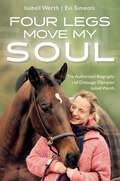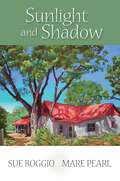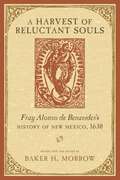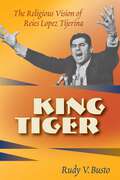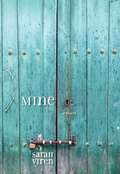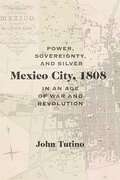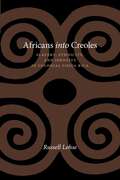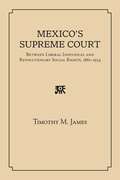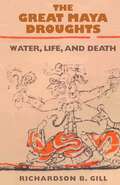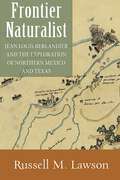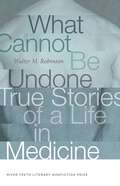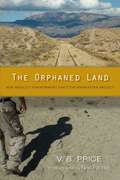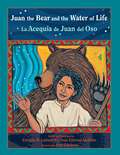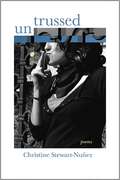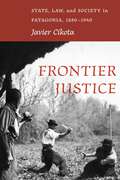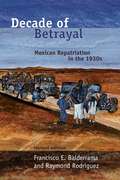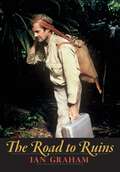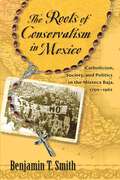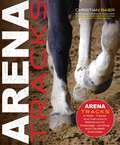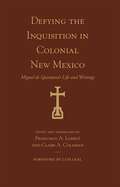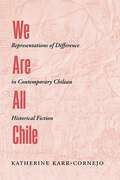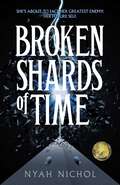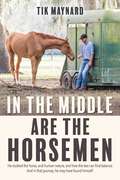- Table View
- List View
Four Legs Move My Soul
by Isabell WerthGerman Olympian Isabell Werth is one of the most successful horsewomen in the world. With six Olympic gold medals and scores of championship titles to her name, there are few her equal on paper. But an equestrian&’s success is wholly dependent on the relationship she has with her athletic partner—her horse—and Werth&’s astounding accomplishments would not have been possible without her unique approach to working with the animals she&’s loved since childhood. Even as a little girl, growing up on a farm on the Lower Rhine, it was clear that Werth possessed an extraordinary gift for empathizing with horses and foreseeing how they were likely to react in certain situations. This insight gave her a special ability as a rider and trainer. Here, Werth collaborates with accomplished sports journalist Evi Simeoni—someone who has witnessed and written about her career from the very beginning—to tell her life story. Readers will get the inside scoop when it comes to Werth&’s accomplishments—and her failures, too. They&’ll hear her personal thoughts regarding some of the biggest controversies to rock the dressage world: Rollkur and Totilas. Perhaps most importantly, they&’ll learn about each of the sensitive and talented horses that has impacted Werth&’s life, including Gigolo, Satchmo, and Bella Rose. For you see, there is a meme that is popular in the riding community that says, &“Two legs move our body, four legs move our soul.&” And it is this sentiment that Werth feels perhaps best defines her.
Sunlight and Shadow
by Sue Boggio Mare PearlAn acclaimed first novel by two award-winning New Mexico writers, Sunlight and Shadow is a story of family, friendship, and what it really means to have hope.&“Everything is going well for San Diego restaurateur Abby Silva. She is four months pregnant, and her husband Bobby is finished with his last tour as a Navy submariner, but their happiness is interrupted by a brutal robbery, followed by Bobby's father's sudden death. Bobby and Abby's mixed marriage angered their families. Her wealthy white parents disowned her after she married a Hispanic, and Bobby's father felt that his son was denying his heritage. Now Bobby wants Abby to have the baby in the tiny New Mexico town of Esperanza where he grew up so she can experience the feeling of 'La Familia,' where everyone helps one another. Abby reluctantly agrees, then Bobby mysteriously disappears. The neighbors gather around to help, and new entanglements ensue in this wonderful first novel by two talented authors who vividly bring to life the beauty of New Mexico and its people.&”—Booklist&“Sue Boggio and Mare Pearl are vivid and sensual writers. From raising goats to making tortillas, life on a farm in Esperanza is beautifully described. Sunlight and Shadow captures the complexities of rural life in New Mexico and presents an intriguing mix of Anglo and Hispanic characters. The plot is fascinating and the characters are well developed. It's a wonderful book.&”—Judith Van Gieson&“Filled with emotion. A real winner of a story.&”—Tony Hillerman
A Harvest of Reluctant Souls: Fray Alonso de Benavides's History of New Mexico, 1630
by Baker H. MorrowThe most thorough account ever written of southwestern life in the early seventeenth century, this engaging book was first published in 1630 as an official report to the king of Spain by Fray Alonso de Benavides, a Portuguese Franciscan who was the third head of the mission churches of New Mexico. In 1625, Father Benavides and his party traveled north from Mexico City to New Mexico, a strange land of frozen rivers, Indian citadels, and mines full of silver and garnets. Benavides and his Franciscan brothers built schools, erected churches, engineered peace treaties, and were said to perform miracles.Benavides&’s riveting exploration narrative provides portraits of the Pueblo Indians, the Apaches, and the Navajos at a time of fundamental change. It also gives us the first full picture of European colonial life in the southern Rockies, the southwestern deserts, and the Great Plains, along with an account of mission architecture and mission life and a unique evocation of faith in the wilderness.
King Tiger: The Religious Vision of Reies Lípez Tijerina
by Rudy V. BustoRight now we look like a cricket. What is a cricket? King of the Insects; a little, tiny animal. All the cricket can do is [say] 'cricket, cricket, cricket.' Just a noise, that's all. But you know, if that cricket gets in the ear of the lion and scratches inside, there is nothing the lion can do. There is nothing; there is no way the lion can use his claws and jaws to destroy the cricket. The more the lion scratches himself the deeper the cricket goes. . . .--Reies López Tijerina, 1971Throughout his career in New Mexican land grant politics, Reies Tijerina frequently used this fable to inspire persistence in the face of impossible odds. As the leader of a grassroots Hispano land rights organization, the Alianza Federal de Mercedes Reales (The Federal Alliance of Land Grants), Tijerina has made an indelible imprint on New Mexico's Hispano culture. King Tiger details Tijerina's life and efforts--those real, rumored, and mythologized--in the first systematic study of the origin of his political ideas. Rudy Busto shows how one of Tijerina's particularly powerful mystical visions led him to northern New Mexico to fight to restore land to those who lost it during various nineteenth-century land grant title conflicts. More than three decades after the infamous Tierra Amarilla County courthouse raid, Tijerina remains an important touchstone for all New Mexicans. In his life and activism are found the interdependent issues of land, water, language, economic development, sovereignty, political power, and rights to cultural formation in the Southwest.
MINE: Essays (River Teeth Literary Nonfiction Prize Series)
by Sarah VirenThis is a book about ownership. It begins with an essay about being given a man&’s furniture while he&’s on trial for murder and follows with essays that question corporeal, familial, and intellectual forms of ownership. What does it mean to believe that a hand, or a child, or a country, or a story belongs to you? What happens if you realize you&’re wrong? Mining her own life and those of others, Sarah Viren considers the contingencies of ownership alongside the realities of loss in this debut essay collection.
Mexico City, 1808: Power, Sovereignty, and Silver in an Age of War and Revolution (Diálogos Series)
by John TutinoIn 1800 Mexico City was the largest, richest, most powerful city in the Americas, its vibrant silver economy an engine of world trade. Then Napoleon invaded Spain in 1808, desperate to gain New Spain&’s silver. He broke Spain&’s monarchy, setting off a summer of ferment in Mexico City. People took to the streets, dreaming of an absent king, seeking popular sovereignty, and imagining that the wealth of silver should serve New Spain and its people—until a military coup closed public debate. Political ferment continued while drought and famine stalked the land. Together they fueled the political and popular risings that exploded north of the capital in 1810.Tutino offers a new vision of the political violence and social conflicts that led to the fall of silver capitalism and Mexican independence in 1821. People demanding rights faced military defenders of power and privilege—the legacy of 1808 that shaped Mexican history.
Africans into Creoles: Slavery, Ethnicity, and Identity in Colonial Costa Rica (Diálogos Series)
by Russell LohseUnlike most books on slavery in the Americas, this social history of Africans and their enslaved descendants in colonial Costa Rica recounts the journey of specific people from West Africa to the New World. Tracing the experiences of Africans on two Danish slave ships that arrived in Costa Rica in 1710, the Christianus Quintus and Fredericus Quartus, the author examines slavery in Costa Rica from 1600 to 1750. Lohse looks at the ethnic origins of the Africans and narrates their capture and transport to the coast, their embarkation and passage, and finally their acculturation to slavery and their lives as slaves in Costa Rica. Following the experiences of girls and boys, women and men, he shows how the conditions of slavery in a unique local setting determined the constraints that slaves faced and how they responded to their condition.
Yoruba Traditions and African American Religious Nationalism (Religions of the Americas Series)
by Tracey E. HucksExploring the Yoruba tradition in the United States, Hucks begins with the story of Nana Oseijeman Adefunmi&’s personal search for identity and meaning as a young man in Detroit in the 1930s and 1940s. She traces his development as an artist, religious leader, and founder of several African-influenced religio-cultural projects in Harlem and later in the South. Adefunmi was part of a generation of young migrants attracted to the bohemian lifestyle of New York City and the black nationalist fervor of Harlem. Cofounding Shango Temple in 1959, Yoruba Temple in 1960, and Oyotunji African Village in 1970, Adefunmi and other African Americans in that period renamed themselves &“Yorubas&” and engaged in the task of transforming Cuban Santer'a into a new religious expression that satisfied their racial and nationalist leanings and eventually helped to place African Americans on a global religious schema alongside other Yoruba practitioners in Africa and the diaspora.Alongside the story of Adefunmi, Hucks weaves historical and sociological analyses of the relationship between black cultural nationalism and reinterpretations of the meaning of Africa from within the African American community.
Mexico's Supreme Court: Between Liberal Individual and Revolutionary Social Rights, 1867-1934
by Timothy M. JamesAlthough Mexico&’s Constitution of 1917 mandated the division of large landholdings, provided land for the landless, and guaranteed workers the rights to organize, strike, and bargain collectively, it also guaranteed fundamental liberal rights to property and due process that enabled property owners and employers to resist the implementation of the new social rights by filing suit in federal court. Taking as its main focus the way new and old rights were adjudicated before the Supreme Court, this book is the first to examine the subject through the lens of court documents and the writings and commentaries of jurists and other legal professionals. The author asks and answers the question, how did the judicial interpretation of the Constitution of 1917 become a barrier to implementing agrarian land rights and labor legislation in the years immediately following Mexico&’s social revolution of 1910?
The Great Maya Droughts: Water, Life, and Death
by Richardson B. GillThis innovative study argues that the collapse of Classic Maya civilization was driven by catastrophic drought. Between A.D. 800 and 1000, unrelenting drought killed millions of Maya people with famine and thirst and initiated a cascade of internal collapses that destroyed their civilization. Linking global, regional, and local climate change, the author explores how atmospheric processes, volcanism, ocean currents, and other natural forces combined to create the dry climate that pried apart the highly complex civilization in the tropical Maya Lowlands in the ninth and tenth centuries.Drawing on knowledge of other prehistoric and historic droughts, The Great Maya Droughts is a useful study of the relationship of humans to their natural and physical environment. The author tries to understand why the Classic Maya failed to adjust their behavior and culture to the climatic conditions and why civilizations in general sometimes collapse in the face of radical environmental change.
Frontier Naturalist: Jean Louis Berlandier and the Exploration of Northern Mexico and Texas
by Russell M. LawsonThis is a true story of discovery and discoverers in what was the northern frontier region of Mexico in the years before the Mexican War. In 1826, when the story begins, the region was claimed by both Mexico and the United States. Neither country knew much about the lands crossed by such rivers as the Guadalupe, Brazos, Nueces, Trinity, and Rio Grande. Jean Louis Berlandier, a French naturalist, was part of a team sent out by the Mexican Boundary Commission to explore the area. His role was to collect specimens of flora and fauna and to record detailed observations of the landscapes and peoples through which the exploring party traveled. His observations, including sketches and paintings of plants, landmarks, and American Indians, were the first compendium of scientific observations of the region to be collected and eventually published.Here, historian Russell Lawson tells the story of this multinational expedition, using Berlandier&’s copious records as a way of conveying his view of the natural environment. Lawson&’s narrative allows us to peer over Berlandier&’s shoulder as he traveled and recorded his experiences. Berlandier and Lawson show us an America that no longer exists.
Getting in TTouch with Your Dog
by Linda Tellington-JonesThe international bestseller from acclaimed animal expert and companion animal trainer Linda Tellington-Jones.Hands-on help from one of the most caring and innovative animal trainers in the world! Linda Tellington-Jones offers her acclaimed form of gentle bodywork and behavior training, giving you tools to:• Influence your dog&’s behavior and performance while enhancing your relationship.• Reduce stress, overcome anxiety, and increase focus.• Assist in recovery from injury or illness.• Relieve discomfort in cases of aging, arthritis, and hip dysplasia.• Solve behavior problems, such as leash pulling, excessive barking, and fear of thunder.• Teach your dog to have his mouth handled and his toenails clipped.Tellington-Jones provides the ultimate reference for safe, gentle, idealistic care for and training of dogs, all ages, breeds, and sizes. Her methods are the key to a better quality of life for your dog.
What Cannot Be Undone: True Stories of a Life in Medicine (River Teeth Literary Nonfiction Prize Series)
by Walter M. RobinsonIn his award-winning debut essay collection, What Cannot Be Undone, Walter M. Robinson shares surprising stories of illness and medicine that do not sacrifice hard truth for easy dramatics. These true stories are filled with details of difficult days and nights in the world of high-tech medical care, and they show the ongoing struggle in making critical decisions with no good answer. This collection presents the raw moments where his expertise in medical ethics and pediatrics are put to the test. He is neither saint, nor hero, nor wizard. Robinson admits that on his best days he was merely ordinary. Yet in writing down the authentic stories of his patients, Robinson discovers what led him to the practice of medicine—and how his idealism was no match for the realities he faced in modern health care.
The Orphaned Land: New Mexico's Environment Since the Manhattan Project
by V. B. PriceAlthough most people prefer not to think about them, hazardous wastes, munitions testing, radioactive emissions, and a variety of other issues affect the quality of land, water, and air in the Land of Enchantment, as they do all over the world.In this book, veteran New Mexico journalist V. B. Price assembles a vast amount of information on more than fifty years of deterioration of the state's environment, most of it hitherto available only in scattered newspaper articles and government reports. Viewing New Mexico as a microcosm of global ecological degradation, Price's is the first book to give the general public a realistic perspective on the problems surrounding New Mexico's environmental health and resources.
Juan the Bear and the Water of Life: La Acequia de Juan del Oso (Pasó Por Aquí Series on the Nuevomexicano Literary Heritage)
by Enrique R. Lamadrid Arellano Estevan JuanLa Acequia del Rito y la Sierra in the Mora Valley is the highest and most famous traditional irrigation system in New Mexico. It carries water up and over a mountain ridge and across a sub-continental divide, from the tributaries of the Río Grande to the immense watershed of the Mora, Canadian, Arkansas, and Mississippi Rivers. The names and stories of those who created this acequia to sustain their communities have mostly been lost and replaced by myths and legends. Now, when children ask, some parents attribute the task of moving mountains and changing the course of rivers to Juan del Oso, the stouthearted man whose father was a bear.From the mountains of northern Spain to the Andes in South America, Spanish-speaking people have told ancient legends of Juan del Oso and his friends. In this children's tale, agriculturalist Juan Estevan Arellano and folklorist Enrique Lamadrid share a unique version of a celebrated story that has been told in northern New Mexico for centuries.Part of the Pasó por Aquí Series on the Nuevomexicano Literary Heritage
Untrussed: Poems (Mary Burritt Christiansen Poetry Series)
by Christine Stewart-NuñezStewart-Nuñez draws upon a number of styles—persona, ekphrastic, lyrical, formal—to create a collection that explores the promises of love and loss. Among Untrussed&’s many delights is a series of Wonder Woman poems that reveal a heroine who is as human as she is superhuman. From pleasure to pain to hope of new love, this collection draws readers into the everyday magic of the world.
Frontier Justice: State, Law, and Society in Patagonia, 1880–1940 (Path to Open)
by Javier CikotaFrontier Justice looks beyond the lawlessness and violence of frontiers to reveal instead the intricate tapestry of relationships that underpinned the development of civil society there. The book looks at northern Patagonia, which was military annexed to Argentina between 1878 and 1885. The Argentine government sought to develop in the region the kind of practices and institutions that would turn “barbarism” into “civilization.” Using court cases to reconstruct the partnerships between prominent neighbors and the police, among neighbors themselves, and between police, judges, and prosecutors, the book argues that settlers were active stakeholders in the establishment and continued functioning of the frontier state.The book centers on an unusual cast of frontier denizens, tackling issues of gender, race, patronage, and colonialism to better understand the competing sources of legitimacy in a newly incorporated area. By the time the national government finally sought to assert its presence more forcefully in the 1930s and 1940s, the population in northern Patagonia had developed its own “pioneer” political culture, built on patronage and informal legal arrangements and reliant on grassroots legitimacy.
Decade of Betrayal: Mexican Repatriation in the 1930s, Revised Edition.
by Francisco E. Balderrama Raymond RodríguezDuring the Great Depression, a sense of total despair plagued the United States. Americans sought a convenient scapegoat and found it in the Mexican community. Laws forbidding employment of Mexicans were accompanied by the hue and cry to get rid of the Mexicans! The hysteria led pandemic repatriation drives and one million Mexicans and their children were illegally shipped to Mexico.Despite their horrific treatment and traumatic experiences, the American born children never gave up hope of returning to the United States. Upon attaining legal age, they badgered their parents to let them return home. Repatriation survivors who came back worked diligently to get their lives back together. Due to their sense of shame, few of them ever told their children about their tragic ordeal. Decade of Betrayal recounts the injustice and suffering endured by the Mexican community during the 1930s. It focuses on the experiences of individuals forced to undergo the tragic ordeal of betrayal, deprivation, and adjustment. This revised edition also addresses the inclusion of the event in the educational curriculum, the issuance of a formal apology, and the question of fiscal remuneration.Francisco Balderrama and Raymond Rodríguez, the authors of Decade of Betrayal, the first expansive study of Mexican repatriation with perspectives from both sides of the border, claim that 1 million people of Mexican descent were driven from the United States during the 1930s due to raids, scare tactics, deportation, repatriation and public pressure. Of that conservative estimate, approximately 60 percent of those leaving were legal American citizens. Mexicans comprised nearly half of all those deported during the decade, although they made up less than 1 percent of the country's population. 'Americans, reeling from the economic disorientation of the depression, sought a convenient scapegoat' Balderrama and Rodríguez wrote. 'They found it in the Mexican community.'--American History
The Road to Ruins
by Ian GrahamFor anyone who ever wanted to be an archaeologist, Ian Graham could be a hero. This lively memoir chronicles Graham's career as the last explorer and a fierce advocate for the protection and preservation of Maya sites and monuments across Mexico, Guatemala, and Belize. It is also full of adventure and high society, for the self-deprecating Graham traveled to remote lands such as Afghanistan in wonderful company. He tells entertaining stories about his encounters with a host of notables beginning with Rudyard Kipling, a family friend from Graham's childhood.Born in 1923 into an aristocratic family descended from Oliver Cromwell, Ian Graham was educated at Winchester, Cambridge, and Trinity College, Dublin. His career in Mesoamerican archaeology can be said to have begun in 1959 when he turned south in his Rolls Royce and began traveling through the Maya lowlands photographing ruins. He has worked as an artist, cartographer, and photographer, and has mapped and documented inscriptions at hundreds of Maya sites, persevering under rugged field conditions. Graham is best known as the founding director of the Corpus of Maya Hieroglyphic Inscriptions Program at the Peabody Museum of Archaeology and Ethnology, Harvard University. He was awarded a MacArthur Foundation genius grant in 1981, and he remained the Maya Corpus program director until his retirement in 2004.Graham's careful recordings of Maya inscriptions are often credited with making the deciphering of Maya hieroglyphics possible. But it is the romance of his work and the graceful conversational style of his writing that make this autobiography must reading not just for Mayanists but for anyone with a taste for the adventure of archaeology.
The Roots of Conservatism in Mexico: Catholicism, Society, and Politics in the Mixteca Baja, 1750-1962
by Benjamin T. SmithThe Roots of Conservatism is the first attempt to ask why over the past two centuries so many Mexican peasants have opted to ally with conservative groups rather than their radical counterparts. Blending socioeconomic history, cultural analysis, and political narrative, Smith&’s study begins with the late Bourbon period and moves through the early republic, the mid-nineteenth-century Reforma, the Porfiriato, and the Revolution, when the Mixtecs rejected Zapatista offers of land distribution, ending with the armed religious uprising known as the &“last Cristiada,&” a desperate Cold War bid to rid the region of impious &“communist&” governance. In recounting this long tradition of regional conservatism, Smith emphasizes the influence of religious belief, church ritual, and lay-clerical relations both on social relations and on political affiliation. He posits that many Mexican peasants embraced provincial conservatism, a variant of elite or metropolitan conservatism, which not only comprised ideas on property, hierarchy, and the state, but also the overwhelming import of the church to maintaining this system.
Arena Tracks
by Christian BaierThe only complete reference explaining classical arena tracks and how to use them.Rider and trainer Christian Baier has been educated in horses and equitation all over the world. In his work to develop an international rider and trainer education and certification system, he realized the equestrian lexicon lacked a practical reference that brought all the classical &“arena tracks&”
Defying the Inquisition in Colonial New Mexico: Miguel de Quintana's Life and Writings (Pasó Por Aquí Series on the Nuevomexicano Literary Heritage)
by Francisco A. Lomelí and Clark A. ColahanMiguel de Quintana was among those arriving in New Mexico with Diego de Vargas in 1694. He was active in his village of Santa Cruz de la Cañada where he was a notary and secretary to the alcalde mayor, functioning as a quasi-attorney. Being unusually literate, he also wrote personal poetry for himself and religious plays for his community. His conflicted life with local authorities began in 1734, when he was accused of being a heretic. What unfolded was a personal drama of intrigue before the colonial Inquisition.Francisco A. Lomelí and Clark Colahan dug deep into Inquisition archives to recover Quintana's writings, the second earliest in Hispanic New Mexico's literary heritage. First, they present an essay focused on Church and society in colonial New Mexico and on Quintana's life. The second portion is a translation of and critical look at Quintana's poetry and religious plays.
We Are All Chile: Representations of Difference in Contemporary Chilean Historical Fiction (Path to Open)
by Katherine Karr-CornejoA study of the relationship between literature and the current conditions of national life, We Are All Chile explores how artistic expression reflects lived experience. The book travels through figures, symbols, and events in Chilean history from the sixteenth to the end of the nineteenth centuries as represented through historical fiction of the late twentieth and early twenty-first centuries, an oeuvre that uses historical stories to reflect upon the challenges of Chilean society post-dictatorship. Contrasting the use of these stories with previous understanding highlights the power of legacies of the dictatorial authoritarian state, particularly as they shape possibilities for the full flourishing of people without regard for their minoritized or disadvantaged identities, such as their sex, sexual orientation, ethnicity, or race.This treatment of Chilean history and culture brings together literature and historiography to offer powerful interpretations of cultural narratives. The focus on varied dimensions of difference illustrates both overlapping representations and distinctive features of each within narratives imagining a more inclusive community. Throughout We Are All Chile, historical narratives and their source material are connected to support the creation of imaginative space for a better and more expansive future. The stories studied highlight the relationships between gender, empire, and the body; performances of race and gender that evoke a utopian dream of coexistence; symbols and systems of the nation as reflections of authoritarian practices; the legibility of the claims of indigenous communities; the role of violence in community building; and the strategies of lament inherent in the repeated stories of dreams for a more inclusive future shattered on the structures of exclusion. These historical narratives alone cannot change the material conditions in which people live, but they can awaken hope for the future that can inspire change. And it is this very process of defending, questioning, challenging, and changing historical stories that opens the door to possibility.
Broken Shards of Time: The Tempus Trilogy (The Tempus Trilogy)
by Nyah NicholEmbark on an epic time-traveling adventure with Broken Shards of Time, a thrilling hard science fiction novel for young adults. Wren Derecho is the lone survivor of a mysterious accident that took the lives of her parents. As Wren tries to navigate through the pain of grief and loss, she crosses paths with three other individuals and soon realizes that something beyond coincidence has intertwined their lives together. Each of their journeys is marked by immense tragedy, fate, a time machine, and a mysterious power source that seems to be alive . . . and not from this world. From the perspective of these four characters, you&’ll find the heartbeat of the story lies within the growth of love, trust and friendship developed from adventure, adversity and a common mission: to rescue their friend and save their city from an unseen yet familiar force. Wren and her team quickly discover that the hero of any story can easily become the villain. With dynamic characters and a gripping plot, Broken Shards of Time is a captivating and thought-provoking read for young adults interested in science fiction and the consequences of time travel.
In the Middle Are the Horsemen
by Tik MaynardIn 2008, 26–year–old Tik Maynard faced a crossroads not unlike that of other young adults. A university graduate and modern pentathlete, he suffered both a career–ending injury and a painful breakup, leaving him suddenly adrift. The son of prominent Canadian equestrians, Maynard decided to spend the next year as a &“working student.&” In the horse industry, working students aspire to become professional riders or trainers, and willingly trade labor for hands–on education. Here Maynard chronicles his experiences–good and bad–and we follow along as one year becomes three, what began as a casual adventure gradually transforms, and a life's purpose comes sharply into focus.Over time, Maynard evolved under the critical eyes of Olympians, medal winners, and world–renowned figures in the horse world, including Anne Kursinski, Johann Hinnemann, Ingrid Klimke, David and Karen O'Connor, Bruce Logan, and Ian Millar. He was ignored, degraded, encouraged, and praised. He was hired and fired, told he had the &“wrong body type to ride&” and that he had found his &“destiny.&” He got married and lost loved ones. Through it all he studied the horse, and human nature, and how the two can find balance. And in that journey, he may have found himself.
